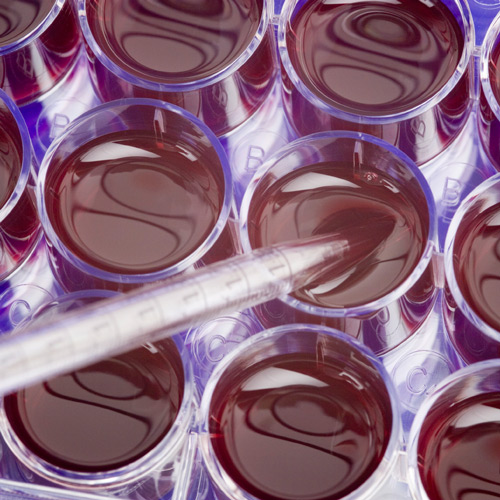I recently tore the ACL and meniscus in my knee— a very common injury that typically calls for surgery and a very long recovery process following— and yes, it is very much testing my patience. So, when a friend sent me an article on how stem cell therapy was used to successfully repair a torn ACL without surgery, the intrigue kicked in as fast as the pain meds did.
 The three things to know about stem cell therapy:
The three things to know about stem cell therapy:
- Stem cell therapy is becoming a more mainstream option for treating tissue damage.
- Procedures are “experimental” and not covered by insurance.
- More research and clinical trials are being pushed by congress.
In most cases, stem cell therapy involves pulling the patient’s own stem cells from their bone marrow and injecting those stem cells into the damaged area of the body to help regrow and strengthen tissue. It boosts and supports the body’s natural ability to heal itself.
In a typical clinic, stem cell therapy is widely accepted as both safe and effective for treating things like torn or damaged ligaments in the body, carpal tunnel, osteoarthritis, TMJ, and tendonitis. Though, because stem cell therapy is still considered “experimental”, it is not a procedure covered by insurance and can cost a patient into the thousands of dollars.
We spoke to Dr. Marc Darrow of the Darrow Stem Cell Institute in Los Angeles to dig into the process.
He began 18 years ago with a process called prolotherapy.
“I was at a medical conference and there was a little workshop on wrist pain and prolotherapy.” said Darrow. “I had hurt my wrist and had a lot of wrist pain. It was 50 percent better after my prolotherapy injection the next day and that woke me up. I did my shoulder and it was 100 percent better the next day.”
Prolotherapy is a process that injects dextrose into the body to cause inflammation. When there is inflammation, the immune system sends blasts of fiber to the area of injection which stimulate growth of protein cells to strengthen the damaged area.
 Through more research, this type of therapy grew into PRP (Platelet Rich Plasma) Therapy. In this type of treatment, blood is drawn from the patient’s arm and put into a machine that separates the red cells from the platelets which contain growth factors. Injecting platelets rather than dextrose stimulates a faster regrowth of tissue.
Through more research, this type of therapy grew into PRP (Platelet Rich Plasma) Therapy. In this type of treatment, blood is drawn from the patient’s arm and put into a machine that separates the red cells from the platelets which contain growth factors. Injecting platelets rather than dextrose stimulates a faster regrowth of tissue.
This eventually evolved into injecting stem cells.
“I can inject people with a 30 gage needle, which is a teeny little needle like an acupuncture needle so it’s not painful.” said Darrow. “When we take bone marrow we’re also getting platelets. The cool thing about the stem cells is that they can morph into the actual tissue. They keep dividing and they become the cartilage in the knee joint or the shoulder or any of the joints.”
Patients of Dr. Darrow have claimed night and day results. One patient had an ACL surgery that he never fully recovered from. One year after surgery he was still limping and experiencing a lot of knee pain. After a couple of treatments, his knee pain went away.
This type of regenerative medicine is quickly gaining momentum for treating diseases across the board.
For example, a clinical trial of stem cell therapy recently helped a legally blind man regain sight. Earlier this month, the California Institute of Regenerative Medicine approved a $6.3 million grant to help fund research using stem cell therapy to restore neurons damaged by ALS: the condition that attacks the nerves responsible for muscle control. It has also shown promise to treat multiple sclerosis and is being used to help improve the recovery of a paralyzed hockey player.
Some stem cell therapy involves pulling stem cells from embryonic tissue which has stirred an ethical debate, and can come with a lot of risk if the body rejects unfamiliar cells. Though, therapy which pulls stem cells from a patient’s own bone marrow removes the ethical dilemma. So, currently members of congress have been showing support for more development in regenerative medicine. The UK and Japan have shown giant leaps in the field of regenerative medicine. Many claim the US needs to catch up, while others remain hesitant. Either way, the progress and advancements will be an interesting thing to watch over the next five to ten years.




